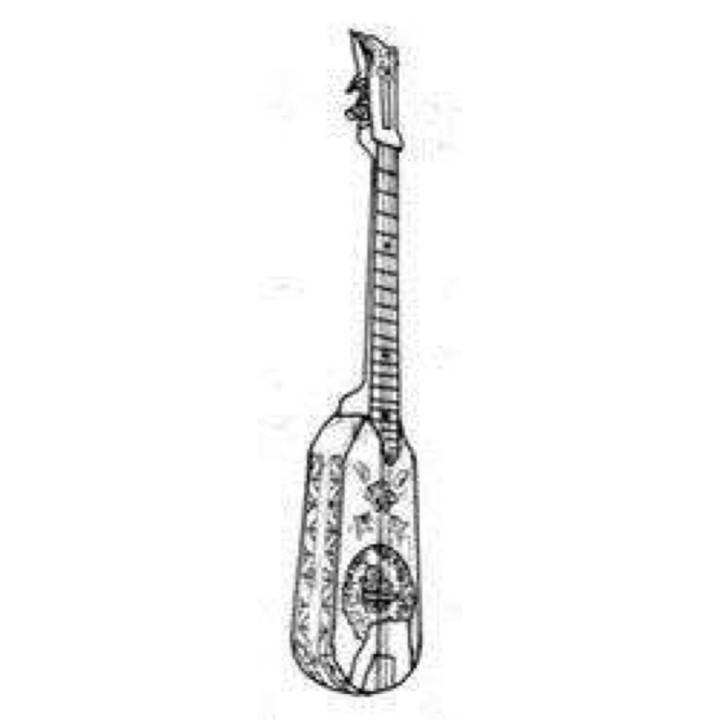The structure of Fetek na
Feitek is a plucked stringed musical instrument of the Xibe people. The Xibe language "fitek na" means plucked music and flowers open, so it is also called plucked piano. It is a new type of Xibe stringed instrument, which was successfully reformed and created on the basis of the folk stringed instrument Dongbuer.

It consists of a sound box, headstock, piano rod, peg, bridge, tailpiece and strings, and the body is 78 cm long. The resonance box is flat and hexagonal, narrow at the top and wide at the bottom, and the bottom of the piano is arc-shaped, which basically maintains the original shape of the Dongbuer piano box.
The piano case is 33 cm long, 12.5 cm wide at the top, 15 cm wide at the bottom, and 7 cm thick. The violin frame is made of multiple pieces of pear wood, apricot wood or walnut wood and other hard boards spliced and bonded, and the upper end is provided with a groove embedded in the violin rod. The front and back of the frame are made of pine, fir or red willow veneer. In the lower part of the center of the panel, there is a large circular hole with a diameter of 11.5 cm, which is covered with a circular python skin as a resonance membrane. Resonate, increase volume. It breaks through the board surface resonance form of the original Dongbuer piano box, and creates a new type of resonance form combining membrane and board, which is the first case in our country's ethnic musical instruments. The headstock and stem are made of a single piece of mulberry wood. Their appearance is far from the traditional Chinese minority stringed instruments, but they are very similar to the headstock and stems of Western instruments.
The headstock is flat and wide, 14 cm long, the upper part is slightly bent back, the top is carved with the outline of a butterfly for decoration, the lower part has a bottom string groove in the middle, and there are four metal gear pegs on both sides (two on the left and right), This kind of pegs are used by western musical instruments such as guitars and mandolins. They have many specifications. They are manufactured in batches by musical instrument accessory factories and are available in stores or musical instrument shops. The piano bar is short and wide, with a flat front and a rear arc, 31 cm long, narrow at the top and wide at the bottom. The front is a fretboard. There are 22 copper frets embedded from top to bottom, and the frets are set according to twelve equal temperaments. The lower end of the piano bar is horizontally inserted into the groove on the upper end of the piano box and glued firmly. There are four flower-shaped sound holes on the upper part of the panel. A wooden, bridge-shaped bridge is placed in the center of the python skin. The tailpiece and tailguard are located below the top, and a wooden post is located at the bottom.
The strings are made of four steel strings, which are called Naxian, Duoxian, Yixian and Maxian in Xibe language, meaning thin, middle, third and thick strings. The decoration design of Feitekna not only conforms to the hobbies of Xibo people, but also has distinctive national characteristics. The top of the headstock is painted with a flying butterfly pattern. The sound holes and decorative patterns opened on the upper part of the panel are shaped like a pot of blooming peony flowers. On the side panel of the sound box, the bow and arrow decorations that Xibo people are familiar with and love are painted. The string guard below the panel is also designed to be the "sandstone Hada" peak pattern, which symbolizes the heroic struggle and glorious achievements of the Xibe people.
 渝公网安备 50010702504639号
渝公网安备 50010702504639号